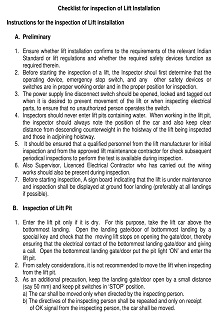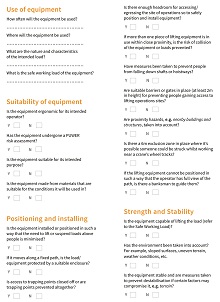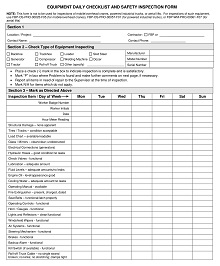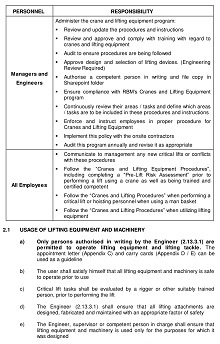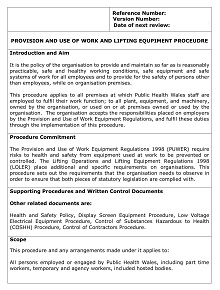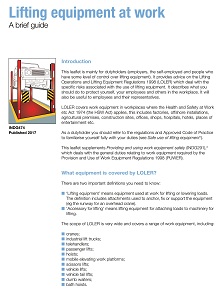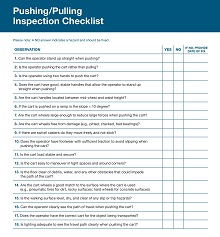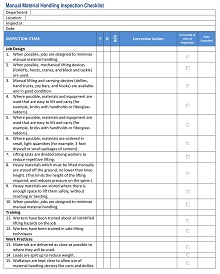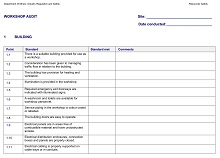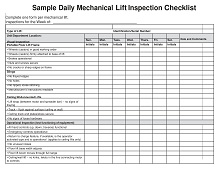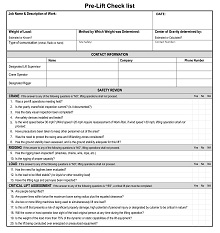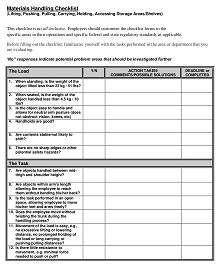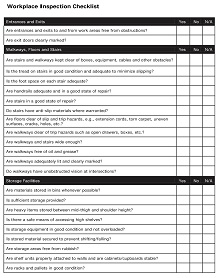20+ Free Lifting Equipment Audit Checklist Templates (PDF, DOC)
A lifting equipment audit checklist template effectively ensures safety and efficiency within businesses manufacturing lifting or hoisting devices. It provides details on how items like forklifts, cranes, hoists, and winches should be assessed for compliance with all applicable health and safety requirements.
The template contains items that can be inspected for signs of strain, fatigue, or damage, such as load testing, operational checks, inspection checklists, and standing orders. All these checklists help ensure the correct use and maintenance of the equipment to keep personnel safe while also keeping businesses productive. Employers can invest in energy-efficient and up-to-date lifting equipment with a well-designed checklist while minimizing risk overall.
Download Free Lifting Equipment Audit Checklist Templates
Inspection And Testing Of Lifting Equipment
Inspecting and testing lifting equipment ensures these machines remain in safe working order. Given how heavy and large many pieces of lifting equipment are and the fact that operators will often be raising materials that can be hazardous, inspections must be conducted regularly and thoroughly.
Testing must also ensure components such as brakes and electrical systems work properly. Ultimately, it is essential for the safety of those operating such machinery, as well as any nearby workers or passers-by, to ensure all inspection and testing steps have been fully completed diligently.
Benefits of Lifting Equipment Audit Checklist
Regularly conducting a lifting equipment audit checklist is important to ensuring workplace safety. Several important benefits of using a lifting equipment audit checklist include improved accuracy and consistency, cost savings over the long term, and the ability to proactively address potential hazards before they have a chance to cause serious harm or injury.
The checklists provide an assessment tool for examining engineering controls, inspections, maintenance programs, implementation of proper safety guidelines, and employee training sessions. This allows employers to quickly identify any issues that may be present with their lifting equipment so corrective action can be taken promptly. All these elements combine to create a safe working environment that helps protect both the employee and employer from further risk.
Scope of the Lifting Equipment Audit
A lifting equipment audit is an important part of any safety program, as it helps identify items or systems that are not compliant with regulations or protocols. It is a comprehensive process whereby all aspects of the equipment must be inspected, from the design and fabrication of the components to the installation and daily use by operators. An audit identifies issues, offers corrective measures, and outlines preventive maintenance schedules for proper operation and ongoing safety compliance.
In addition, such an audit may involve thorough research into historical data regarding incidents involving the same type of machinery to ensure a more efficient inspection. The scope of a lifting equipment audit can vary greatly depending on how comprehensive you want it to be. Still, it should always cover all relevant areas to ensure maximum safety standards and operational efficiency.
How to Create a Security Risk Assessment Template
A security risk assessment is an essential tool for any business. It can help you identify potential threats and vulnerabilities to your operations and develop strategies to mitigate those risks. With the right template, you can quickly create a comprehensive security risk assessment template that will help protect your organization from threats.
Identify Threats and Vulnerabilities
The first step in creating a security risk assessment is identifying potential threats and vulnerabilities. This includes external threats (such as hackers or malicious software) and internal threats (such as poor employee practices). Consider what types of data are stored on your systems, who has access to it, where it is stored, and any other important factors. Once you have identified the potential threats, you can start building out your risk assessment framework.
Develop Your Framework
Now, it’s time to develop the framework of your security risk assessment template. Start by outlining each threat or vulnerability that you’ve identified. For each one, include the impact on your business if it were to occur and the probability of occurrence. Also, consider any preventative measures that could be taken to reduce the likelihood of these events occurring. This framework will serve as the basis for your assessment.
Create a Mitigation Plan
Once you have outlined all potential threats and developed a framework for assessing them, it’s time to create a mitigation plan. This should include steps to reduce existing and future risks that may arise from new technology or changes in operations. Additionally, ensure all employees know this plan and understand their role in helping keep your systems secure.

